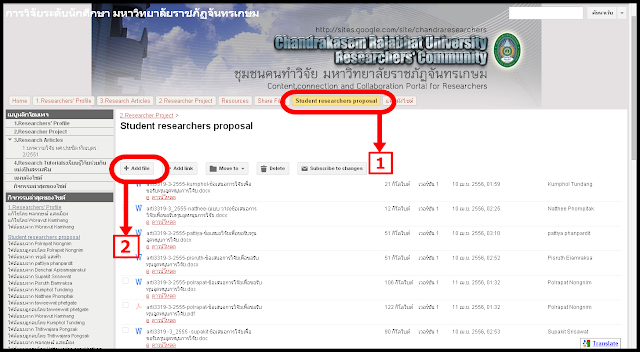แปล-สรุปบทความเรื่อง 10 Ways to Speed Up Your Site
เขียนโดย : Sté Kerwer
แปลสรุปโดย : นาย นายพลกฤษณ์ แสงเมือง รหัสนักศึกษา 5011309860
Contact E-mail : polkritsang@gmail.com
Publish Blog : http://arti3319-polkritsangmuang.blogspot.com/
เนื้อหา
10 Ways to Speed Up Your Site
One sure way to tick of your visitors and have them clicking away before they even see your site is, well, to have a site they can’t see. Or, at least, to have a site that they have to wait to see. The minute a visitor clicks your link, no matter where they find it, you have approximately two to three seconds to grab their attention. If they have to wait longer than that for you site to load then you’ve already lost their attention. Here are 10 ways to speed up your site so you can catch them as soon as they hit the page.
Resize your images
Most blogs have built-in coding to resize your images. In fact, with most WordPress blogs you can even resize the resized image. (Yes, I know. But it’s true!) Obviously, this makes it easy to upload any image to your site because you can just let the programming do the heavy work.
However, each time the internal code has to take over and resize your images it puts a drain on your CMS and slows down your load time. It might just be a nano-second, but on an image heavy site, all those nano-seconds add up.
Resize your images before you upload them to your blog and shave time off your load time.
Image formats
For faster loading times, save photographs as JPEGs, save your drawings and flat color images as GIFs and save everything as as PNGs.
Convert to CSS
Take a look at the coding on your blog. If it’s been awhile since you changed your design you may have a lot of ugly html code floating around in there. CSS is a much cleaner design, and much more versatile for your design applications. And because it’s clean and streamlined your site will load faster. If you can’t clean up your coding yourself then consult a designer.
Change your Gravatars settings
Even those little Gravatar images can pull down your load time because they’re loaded from external sites. Don’t delete them altogether because you’ll mess up existing comments. Instead, go into your settings and choose “Blank”.
Are you using reliable hosting?
Unless you have a few hundred blogs, web hosting isn’t that expensive and the prices only vary a few cents. If you have to pinch pennies do it somewhere else, but not with your hosting. Choose a reliable host, like HostGator, which has an Intel Xeon 5xxx Series processor for shared hosting. It’s powerful enough to make sure that all websites hosted on the same server operate with the same load times.
Use a quality theme
A lot of those free WordPress themes you see floating around the Web are junk. The code is outdated or worse yet – the code didn’t work to begin with. Choose a quality theme like Thesis or Genesis so you know it has clean code for faster loading times.
Optimize your database
Databases can get cluttered and disorganized which slows down your load times. If you’re using WordPress install a database optimizer like WP Database Optimizer to tidy the place up.
Use Hotlink and Leech protection
If your web hosting company offers Hotlink and Leech protection on your CP, enable both features. This prevents other sites from linking directly to your files or images and stealing your bandwidth.
Manage your plugins
Deactivate and Delete plugins you’re not using. If you have old plugins on your blog, make sure they’re updated or look for more up-to-date plugins. Depending on what you’re using, you might be able to find a new plugin that can take the place of 3 or 4 of those old ones.
Use a Content Delivery Network (CDN)
If you’re delivering lots of images and files consider hosting your content in a cloud. This enables visitors to access your content from a server closer to their location. Instead of traveling half-way around the world to pick up your content, it’s delivered from a server in their own backyard.
สรุปเอกสารงานแปลข่าวสาร
สิ่งหนึ่งที่เราไม่สามารถรู้ได้เลยว่าเว็บไซต์ที่เราต้องการจะเข้าชมนั้นเป็นเว็บไซต์ที่น่าสนใจหรือไม่จนกว่าเราจะได้เข้าไปชมเว็บไซต์นั้นๆ ซึ่งถ้าเราคลิ้กเข้าไปชมเว็บไซต์ใดเว็บไซต์หนึ่งแล้วมันเกิดโหลดช้าหรือต้องใช้เวลานานในการเข้าชม ก็จะทำให้เราไม่สนใจหรือไม่ต้องการเข้าชมเว็บไซต์นั้นอีก ซึ่งเวลาเพียงไม่กี่วินาทีนี้เองจึงเป็นเวลาที่สำคัญสำหรับผู้ที่มีเว็บไซต์อย่างมาก เราจึงมี 10 วิธีที่จะทำให้เว็บไซต์ของคุณมีความเร็วในการโหลดมากขึ้น ดังนี้
1.การปรับขนาดรูปภาพ
บล็อกส่วนใหญ่จะมีการสร้างรหัสเพื่อปรับขนาดของภาพได้ ซึ่งถ้ารูปภาพของคุณมีขนาดไม่มากก็จะง่ายต่อการอัพโหลด และถ้าขนาดของภาพยิ่งมากก็จะทำให้ระบบ CMS(Content Management System)นั้นทำงานหนักมากขึ้น ดังนั้นควรปรับขนาดของภาพก่อนอัพโหลดเพื่อช่วยประหยัดเวลา
2.รูปแบบไฟล์ภาพ
เพื่อช่วยให้การโหลดเร็วขึ้นควรบันทึกรูปภาพเป็นไฟล์ PNGs
3.ปรับแต่งระบบ CSS
ลองเข้าไปดูรหัสในบล้อกของคุณที่เกี่ยวกับการออกแบบ ซึ่งคุณอาจจะเจอรหัส html ที่คุณไม่ต้องการ ซึ่งคุณสามารถใช้ชุดคำสั่ง CSS(Cascading Style Sheets) ออกแบบหรือจัดการกับรหัสพวกนั้นเพื่อให้เว็บไซต์โหลดได้เร็วขึ้น
4.เปลี่ยนการตั้งค่าของ Gravatars
ควรเข้าไปตั้งค่า Gravatar ของคุณให้เป็นว่าง
5.คุณใช้โฮสติ้งที่เชื่อถือได้หรือไม่
เลือกโฮสต์ที่เชื่อถือได้เช่น HostGator ซึ่งมีการประมวลผล Intel Xeon ซีรีส์ 5xxx สำหรับใช้พื้นที่ร่วมกัน ซึ่งจะทำให้มีประสิทธิภาพเพียงพอที่จะแน่ใจว่าเว็บไซต์ทั้งหมดที่โฮสต์บนเซิร์ฟเวอร์เดียวกันนั้นสามารถทำงานและโหลดในเวลาเดียวกันได้
6.ใช้ชุดรูปแบบที่มีคุณภาพ
การเลือกใช้ชุดรูปแบบ(theme)นั้นก็มีส่วนในการทำให้เว็บไซต์เร็วหรือช้าขึ้น ดังนั้นควรเลือกใช้ชุดรูปแบบ(theme)ที่มีคุณภาพหรือเลือกใช้ชุดรูปแบบ(theme)ที่มีมาตั้งแต่ต้น
7.เพิ่มประสิทธิภาพฐานข้อมูลของคุณ
ในที่นี้จะยกตัวอย่างเช่น หากคุณใช้ WordPress ในการทำเว็บไซต์ คุณควรจะติดตั้งระบบ WP Database Optimizer เพื่อเพิ่มประสิทธิภาพให้กับฐานข้อมูลที่เราใช้ด้วย
8.ใช้ Hotlink และ Leechในการดูแลเว็บไซต์
หาก Web Hosting ของคุณมีระบบ Hotlink และ Leech คุณควรเลือกเปิดใช้งานคุณลักษณะทั้ง 2 อย่างนี้เพื่อป้องกันการเชื่อมโยงโดยตรงไปยังไฟล์หรือภาพของคุณจากเว็บไซต์อื่นๆ
9.จัดการระบบปลั๊กอินของคุณ
ยกเลิกการใช้งานและลบปลั๊กอินคุณไม่ได้ใช้ หากคุณมีปลั๊กอินเก่าบนบล็อกของคุณ ควรตรวจสอบให้แน่ใจว่าได้ปรับปรุงแล้วหรือควรมองหาปลั๊กอินที่ดีมากขึ้น
10.ใช้เครือข่ายการจัดส่งเนื้อหา (CDN)
หากคุณมีรูปภาพและไฟล์จำนวนมาก คุณควรเลือกใช้ CDN(Content Delivery Network) เพื่อเก็บข้อมูลหรือเนื้อหาของคุณ ซึ่งจะช่วยในการเข้าถึงเนื้อหาของคุณได้ง่ายขึ้นและช่วยให้ Server ของเราไม่ต้องทำงานหนักด้วย




















